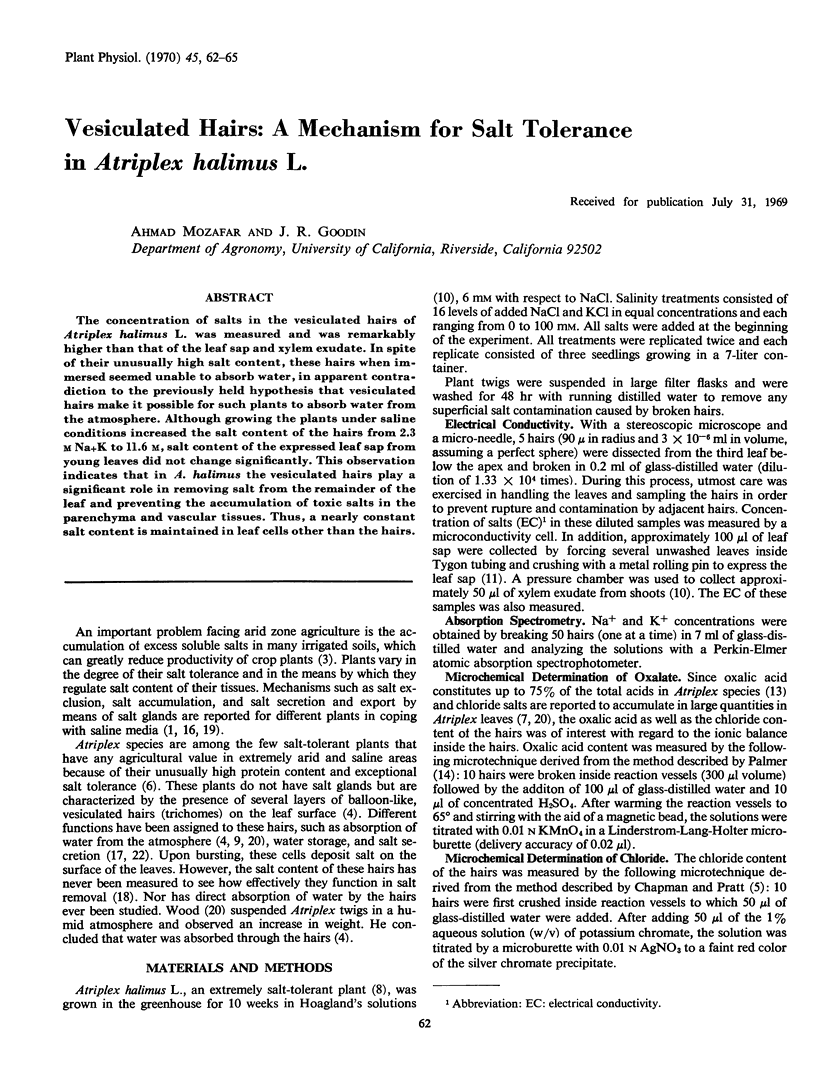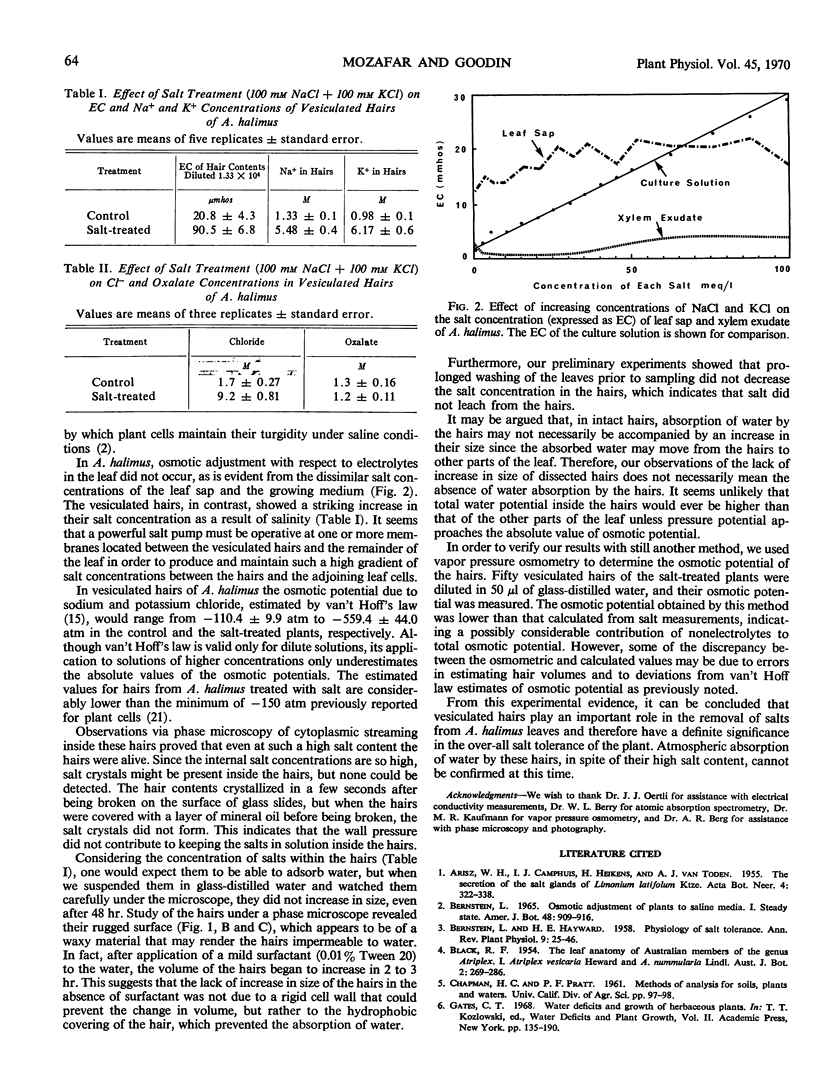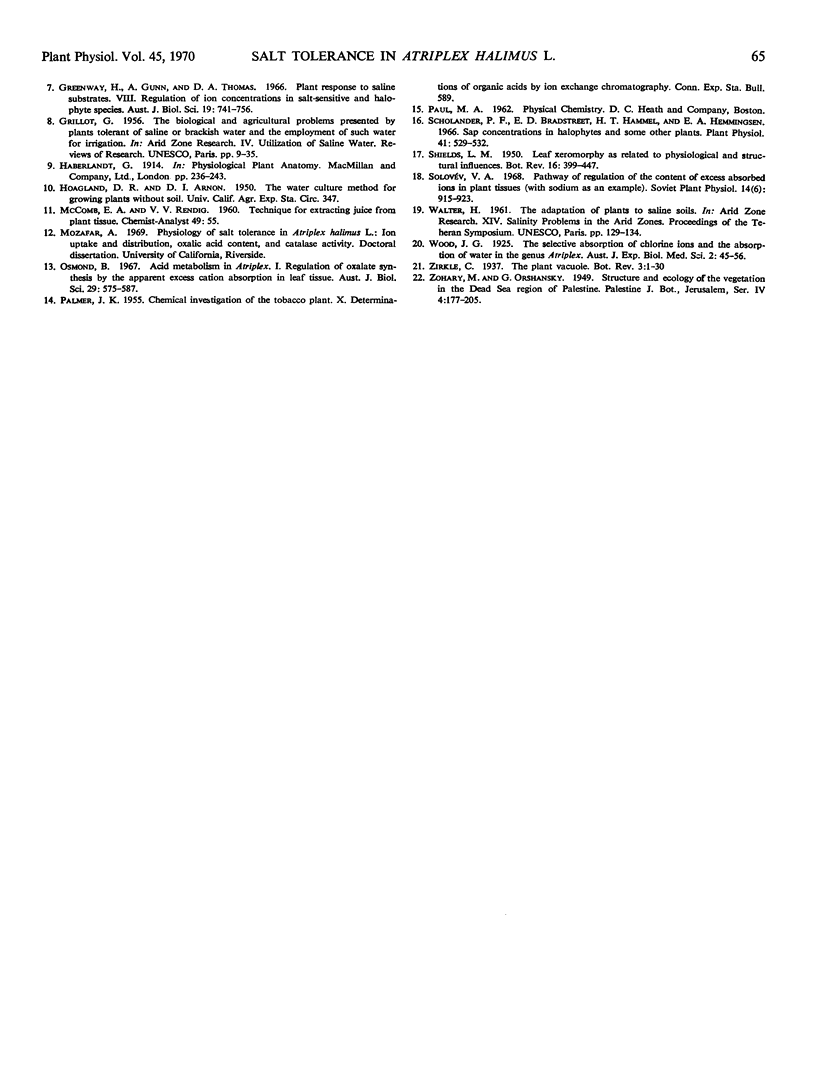Abstract
The concentration of salts in the vesiculated hairs of Atriplex halimus L. was measured and was remarkably higher than that of the leaf sap and xylem exudate. In spite of their unusually high salt content, these hairs when immersed seemed unable to absorb water, in apparent contradiction to the previously held hypothesis that vesiculated hairs make it possible for such plants to absorb water from the atmosphere. Although growing the plants under saline conditions increased the salt content of the hairs from 2.3 m Na+K to 11.6 m, salt content of the expressed leaf sap from young leaves did not change significantly. This observation indicates that in A. halimus the vesiculated hairs play a significant role in removing salt from the remainder of the leaf and preventing the accumulation of toxic salts in the parenchyma and vascular tissues. Thus, a nearly constant salt content is maintained in leaf cells other than the hairs.
Full text
PDF



Images in this article
Selected References
These references are in PubMed. This may not be the complete list of references from this article.
- Scholander P. F., Bradstreet E. D., Hammel H. T., Hemmingsen E. A. Sap concentrations in halophytes and some other plants. Plant Physiol. 1966 Mar;41(3):529–532. doi: 10.1104/pp.41.3.529. [DOI] [PMC free article] [PubMed] [Google Scholar]



